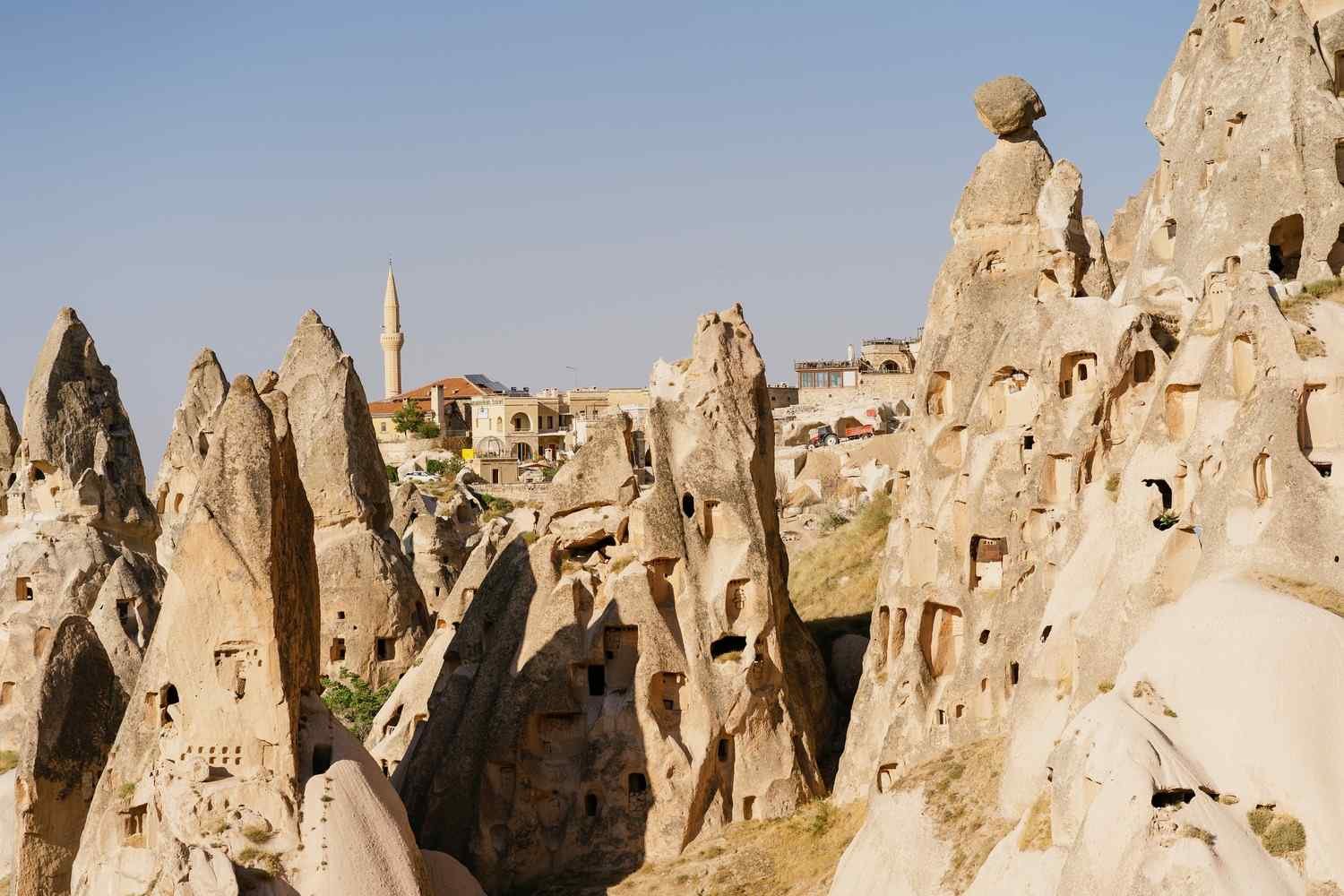Fairy chimneys are unique geological formations found in the Cappadocia region of Turkey. They are tall, cone-shaped rock formations that have been eroded over time by wind and water, resulting in their distinctive shape. They are made up of layers of volcanic ash and tuff, which are soft and easily eroded, and harder rock formations like basalt.
The fairy chimneys are believed to have been formed millions of years ago when volcanic eruptions covered the area with ash and lava. The ash and lava eventually hardened into rock, but the softer ash layers were gradually eroded by wind and water, leaving behind the fairy chimney formations we see today.
These unique formations have been an important part of the cultural and religious history of the region for centuries. In ancient times, people carved homes, churches, and even entire cities into the fairy chimneys, using the soft tuff rock to create elaborate underground dwellings. Some of these ancient settlements, such as the Goreme Open-Air Museum, are now popular tourist attractions and offer a glimpse into the region’s rich history and culture.

Today, visitors to Cappadocia can explore the fairy chimneys and the surrounding landscape by hiking, hot air balloon rides, horseback riding, or taking guided tours. Some of the most popular fairy chimney formations include the Three Beauties, Love Valley, and Pigeon Valley.
It is worth noting that the fairy chimneys and the surrounding area are protected by Turkish law, and visitors are urged to respect the local environment and follow responsible tourism practices. As with any natural or cultural site, visitors should take care not to damage the formations or litter the area.
Overall, the fairy chimneys of Cappadocia are a truly unique and fascinating geological wonder, with a rich history and cultural significance that make them a must-see destination for anyone visiting Turkey.




